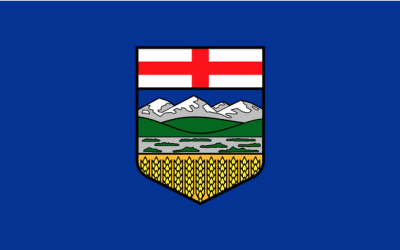President Obama has kicked off a three-day bus tour of Minnesota, Iowa and Illinois, where the corn is high and at least some factories are spewing smoke. He's holding town-hall meetings on the economy, putting the unemployed back to work and "growing wages for everyone." He won these Midwestern states handily in 2008, but he's not taking anything for granted these days. The Midwest is the region with the largest number of target states. The president's latest Gallup job approval there is 39%, the same as the nation as a whole.
To understand the political economy of the Midwest, it helps to put it in historic perspective. Originally the Midwest's economy was built on its farms, then later on its factories. The long farm-to-factory migration lasted from roughly 1890 to 1970. At the end of that period, when I was working on the first edition of "The Almanac of American Politics," it seemed there were two models for the U.S. future. One was the Michigan model, which prevailed in the industrial Midwest and the factory towns of the Great Plains. The other was the Texas model, which prevailed in most of the South and Southwest.
The Michigan model was based on the Progressive/New Deal assumption that, after the transition from farm to factory, the best way to secure growth was through big companies and big labor unions.
The Big Three auto companies, economist John Kenneth Galbraith wrote, could create endless demand for their products through manipulative advertising and planned obsolescence. The United Auto Workers would ensure that productivity gains would be shared by workers and the assembly line would never be speeded up. In those days, 40% of Michigan voters lived in union (mostly UAW) households, the base vote of a liberal Democratic Party that pushed for ever larger governments at the local, state and federal levels. You found similar alignments in most Midwestern states.
Liberals assumed the Michigan model was the wave of the future, and that in time—once someone built big factories and unions organized them—backward states like Texas would catch up. Texas liberal writers Ronnie Dugger and Molly Ivins kept looking for the liberal coalition of blacks, poor whites and Latinos that political scientist V.O. Key predicted in his 1940s classic "Southern Politics."
Adversarial unionism is one reason the Midwest slumped. It turns out that the 1970 assembly line, with union shop stewards always poised to shut it down, was not the highest stage of human economic development. When you make labor more expensive, you create incentives to invent new machines and create new jobs elsewhere. Foreign auto manufacturers built plants in a South recently freed from state-imposed racial segregation. With no adversarial unions, management and labor could collaborate and achieve quality levels the Big Three took decades to match.
One thing that those romantic about Midwestern farms and factories tend to forget is that people hated working in those unionized factories, just as the young Harry Truman hated working on his father's farm. That's why the UAW negotiated "30 and out"—retirement after 30 years—with GM in 1970. With workers retiring well before Medicare age, the next union demand was the billions in retiree health-care benefits that more than anything else bankrupted the Big Three.
Michigan is an extreme example of what has afflicted the industrial Midwest. Big corporations were replaced by big government as the leading employer, and public-employee unions replaced industrial unions as the chief financiers of the Democratic Party. In effect, public-employee unions have been a mechanism by which taxpayer money, in the form of union dues, permanently finances a lobby with a vested interest in higher spending and less accountability. It's a lobby that's benefited from the Democratic Party loyalties of black voters, of Latinos in Chicago (the only large Hispanic presence in the Midwest) and of culturally liberal suburbanites.
This Midwestern model is unraveling before our eyes. The Midwest has not been hit as hard by foreclosures or unemployment as some other places, with Michigan an exception on both counts, but you have to look hard for green shoots of growth. They may be most evident in North Dakota, where low costs and light regulation have produced booms in energy and high tech.
But amid the recession, Midwestern Obama Democrats and their public-union allies lost their hold on voters in almost every Midwestern state, losing five governorships last year, including Iowa, and winning the Illinois and Minnesota governorships by less than 1% of the vote. A region that voted 54%-45% for Barack Obama in 2008 voted 53%-43% Republican for House candidates in 2010.
The repudiation of the Midwestern model has played out most dramatically in Wisconsin, where government unions were recognized in 1959. On the streets of Madison—a small city dominated by state government and a giant state university—liberals demonstrated against Gov. Scott Walker's reforms. Ludicrously, they depicted public employees as an oppressed proletariat and they proved ready to break the law with violence in the streets and casuistry in the courts.
Despite the unions' huge financial advantages, Gov. Walker's Republicans held on to their majorities in the state Supreme Court and state Senate in hard-fought judicial and recall elections. The political balance in Wisconsin and the Midwest generally looks more like 2010 than 2008.
So what does the president have to offer the Midwest? The idea that the wave of the future is an ever-larger public sector financed by a more or less stagnant private sector looks increasingly absurd. The Midwest's public sector has, as Margaret Thatcher put it, run on "other people's money." Meanwhile, Mr. Obama's trip to the Midwest has been preceded by Texas Gov. Rick Perry's foray into Waterloo, Iowa. Mr. Perry points out that his state, with low taxes and light regulation, has been producing nearly half of America's new jobs. The Texas model may be sweeping the Midwest, not vice versa.


